UK & London lettings update Autumn 2023

Tight supply in the rental market continues to push up rents, albeit more slowly than the last 2 years.
Our quarterly update examines the latest trends in the UK, regional and prime London lettings markets.
Key highlights
- The rate of rent rises has peaked, but rents are still moving upwards at a slower pace
- Tenant demand remains close to record highs, according to RICS survey
- The imbalance between high demand and tight supply is unlikely to unwind quickly
UK market
The official measure of UK rents shows that rents continued to climb over the summer, with annual rental growth of 5.5% in the year to August, up from 3.5% in August last year, and 1.3% in August 2021. This measure of rental growth, which includes existing tenants and new lets agreed, probably looks modest to tenants who are looking for a new rental property where rental rises are larger.

Zoopla’s latest index of new rental lets shows average rental rises of 10.5% across the UK. This is down from 12.2% in July last year, but still indicates that many areas of the country are still registering double-digit rental growth for new lets.
As the map shows below, rents are rising fastest in Scotland, with an average 12.7% annual uplift, London, at 12.4% and the North West, where rents are up 11%. In fact, Manchester registered the highest rental growth of any English city, with a 14% increase on the year.

The growth in rents is being supported by relatively strong earnings growth, but is also due to the supply pressures in the market where demand continues to surge. The rise in mortgage rates over the last 18 months has led to more potential buyers staying in the rental market for longer. Meanwhile, buy-to-let landlords have been leaving the sector in the face of a changed tax regime and higher mortgage rates.
London & Prime London market
The ONS measure of rental growth shows London rents up by 6% in a slow climb from 0.1% at the start of 2022.
In prime London, the bounce-back in rents was much faster and stronger. After falling sharply at the start of the pandemic, the rents rallied in 2021 as tenant demand flooded back into the central zones of London as workplaces, universities and amenities got back up to speed in the wake of lockdowns. Rents were rising at an annual rate of 13.6% last summer, and have risen by 25% since the market low in 2021.
Rents are still rising in the prime market, but at a more moderate rate, registering 5.4% growth, slightly lower than the wider London market. Zoopla has also noted that outer London rental growth has caught up with inner London as tenants extend their search more widely across the capital.

Rental growth in prime central London is higher for flats, signalling increased demand for properties typically at lower price points in the market. Even with a lack of stock across the market, tenants’ budgets are coming under pressure which is already acting as a drag on rental growth in the market.
The rise in rents is pushing up yields, even as mortgage financing costs also rise. Prime London rental yields rose to a decade-high of 3.3% in September.


Outlook
| Year | UK House Prices | Prime London Prices | Prime London Rents |
|---|---|---|---|
| 2023 | -8.0% | -4.0% | +5.0% |
| 2024 | -2.0% | +0.5% | +3.5% |
| 2025 | +4.5% | +3.0% | +3.0% |
The information provided in this report is the sole property of Cluttons LLP and provides basic information and not legal advice. It must not be copied, reproduced or transmitted in any form or by any means, either in whole or in part, without the prior written consent of Cluttons LLP. The information contained in this report has been obtained from sources generally regarded to be reliable. However, no representation is made, or warranty given, in respect of the accuracy of this information. Cluttons LLP does not accept any liability in negligence or otherwise for any loss or damage suffered by any party resulting from reliance on this publication.
Latest residential research
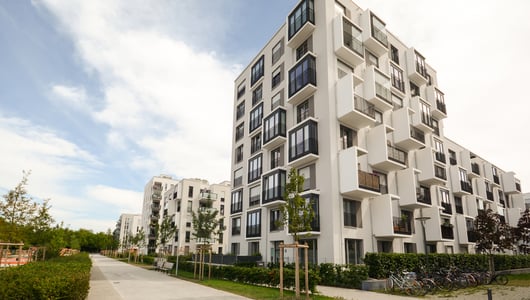
UK & London rental market update Spring/Summer 2024
Continued demand for rental property amid constrained supply delivers rental growth .
UK & London sales market update Spring/Summer 2024
Price declines are reversing and activity up from Q4 2023, but pricing still remains key for new listings.
Economic update Spring/Summer 2024
The UK economy has likely emerged from recession, although growth remains muted. Inflation is falling and rates cuts are on the cards this year, which will translate into lower mortgage rates.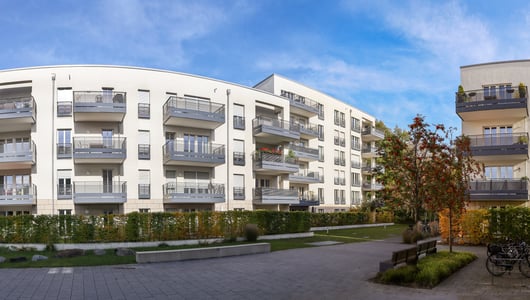
UK & London rental market update Spring 2024
Demand in the UK rental market hit new highs in 2022 and early 2023, and is now moderating, but is still higher than pre-pandemic averages.
UK & London sales market update Spring 2024
Average annual UK house prices falls hit a low of -5% in September last year, but have since moderated to around -2%.
Economic update Spring 2024
The economy grew more than expected in November, according to the latest data from the ONS, but there is still a risk that the UK could dip into recession.
Residential Forecast 2024
Our outlook for the residential market this year and into 2025.
UK & London sales market update Autumn 2023
Average house prices continue their downward trajectory, with values falling 5.3% in the year to September. Our quarterly update examines the latest trends in the UK, London, and prime London sales markets.
Hyde Park market focus: Autumn 2023
A new seasonal trend? The housing market is traditionally quite seasonal, with busy periods in Spring, Autumn and the New Year, as buyers and movers use markers of the year as a goal to settle into a new home.
Wapping & Limehouse market focus: Autumn 2023
The Bank of England has raised the base rate multiple times this year, but the messaging from rate-setters at the central bank is that we could be nearing the peak. This has allowed the money market rates, which determine the price of fixed-rate mortgage lending to fall back a little.
Shad Thames market focus: Autumn 2023
Activity in the London sales market has eased this year compared to a very busy 2022, as rising interest rates and a more uncertain economic outlook affect the whole UK housing market.
UK economic update Autumn 2023
The key economic move over the last few months was the Bank of England’s decision not to raise interest rates in September.
Prime London sales Q3 2023
Price growth in the Greater London market was more subdued than in some other parts of the country during the pandemic.
Prime London rental Q3 2023
The bounce back in rental demand after the pandemic amid constrained supply created a turbo-charged market in 2022. There is still very strong rental demand compared to pre-pandemic norms, but it has now plateau-ed in many areas, or has started to recede slightly.
UK & London lettings update Q3 2023
Rents continue to rise, but a slight loosening in supply means the pace of growth is beginning to ease in many regions.
UK & London sales market update Q3 2023
Average house prices continue to fall, although at a relatively modest rate. Average values are down 3.5% on the year.
UK economic outlook Q3 2023
The economy settled down relatively quickly from the shock of the mini-budget in September last year and the resulting spike in gilt rates and mortgage rates.
UK economic outlook Q2 2023
Higher than expected inflation dampens expectations for UK economy. Inflation data was higher than expected in May, which has weighed on business confidence, and has pushed interest rate expectations, and the cost of borrowing, higher.
UK & London lettings market update Q2 2023
Rents continue to rise, but the pace of growth is beginning to ease in many regions. Tight levels of supply are still underpinning rental growth.
UK & London sales market update Q2 2023
March marked the seventh consecutive month of monthly price falls in house prices across the UK, taking the annual decline to 3.1%.
Market focus: Shad Thames
The landscape for the housing market has changed, as the bank base rate is now higher than the ultra-low rates of the last decade.
Market focus: Wapping & Limehouse
Sentiment across the prime London market has improved since the start of this year after the political and money market upheavals in the wake of September’s mini-budget.
Residential lettings market update Q1 2023
Rents continue to rise strongly across the UK as demand flows back into city centres where supply is tight.
UK and London sales market update Q1 2023
Average house price growth slowed sharply at the end of last year and continued to ease in January.
UK economic outlook Q1 2023
The economic outlook for the UK is challenging this year, but there is growing consensus that the downturn will not be as long as previously expected.
Residential forecasts Q4 2022
After months of political upheaval, the landscape has calmed in recent weeks, providing a greater sense of stability in markets than at any time since mid-September.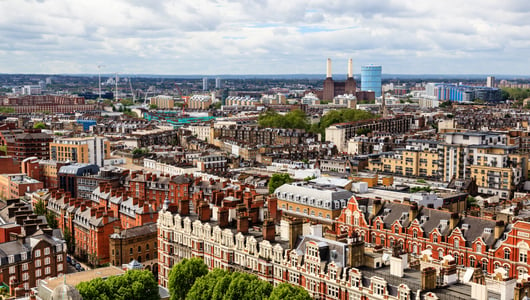
Forecasts and outlook Q3 2022
The recent political upheavals have exacerbated the uncertainty around the UK’s economic outlook. But behind the headlines, housing data has for some months been pointing to a slowing market after several years of record-high activity.
Wider South East Q3 2022
House price growth slowed slightly in the wider South East in Q3, but are still up 10% year on year.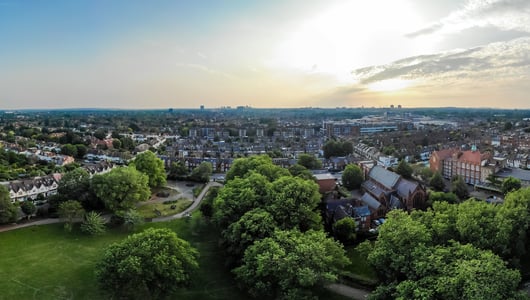
London sales and rental review Q3 2022
Average house prices across London continued register growth in Q3, but at a more modest rate than other regions.
UK economic outlook Q3 2022
Months of political upheaval has served to increase the UK’s economic uncertainty in recent months as policy U-turns added significantly to existing market volatility.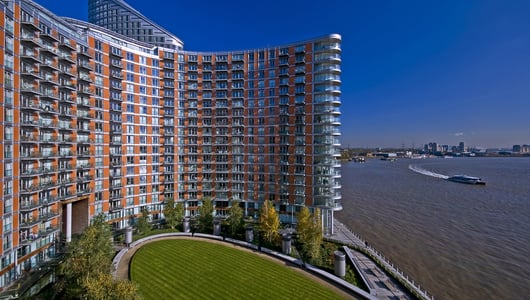
Development review Q3 2022
The supply of new homes at national level was very much in line with recent trends in Q3, but the outlook is turning negative due to weakness in the wider housing market and the impending end of Help to Buy.
UK rental review Q3 2022
Average UK rents continue to rise strongly, with double-digit growth in most regions in Q3.
UK sales review Q3 2022
Official data continues to show strong price growth for average house prices, and high activity levels.
Forecast and outlook Q2 2022
Q2 saw the first small signs that the struggling economy was starting to impact the housing market, but some forecasters are still upgrading their growth expectations for 2022 based on the very high levels seen in the first half of the year.
Wider South East Q2 2022
Annual house price and rental growth remained around the 10% level in the wider South East in Q2, broadly continuing trends from earlier this year and staying in line with national trends.
UK economic outlook Q2 2002
Q2 saw further volatility for the economic recovery, with monthly GDP growth in May above expectations but other indicators turning increasingly negative.
London sales and rental review Q2 2022
Annual rental growth increased to around 15% in London in Q2, taking values beyond pre-pandemic levels.
Development review Q2 2022
At the national level housebuilding recorded a positive Q2, with output slightly ahead of recent trends.
UK rental review Q2 2022
Rental growth across the country accelerated further in Q2 as demand stayed high and there was only a limited response on the supply side.
UK sales review Q2 2022
The UK housing market continued to look strong in Q2 despite higher mortgage rates and the rising cost-of-living.
Forecasts and outlook Q1 2022
At national level the housing market has so far defied these issues but affordability is starting to look stretched and the expected further rises in inflation and mortgage rates are likely to dampen growth.
Wider South East Q1 2022
Both sales and rental values continued to grow strongly across the wider South East in Q1.
London sales and rental review Q1 2022
sales market saw further price growth in Q1, but at a slower rate than the rest of the country.
UK economic outlook Q1 2022
The economic recovery stuttered in Q1 due to another Covid variant, although many measures are back to their pre-pandemic levels.
Development review Q1 2022
So far 2022 has been business as usual for housebuilding, with output very much in line with recent trends both nationally and in London.
UK rental market Q1 2022
The rental market started 2022 much as it left 2021, with demand well ahead of supply in all regions, rental growth over 10%, and huge competition for properties.
UK Sales review Q1 2022
Demand remained ahead of supply in Q1, leading to high levels of activity and price growth continuing the trends from 2021.
UK economic outlook Q4 2021
The economy grew steadily in Q4 as it continued to recover from pandemic restrictions, with employment data also looking good.
Forecasts & Outlook Q4 2021
The economy continues to recover and GDP finally returned to pre-pandemic levels in Q4. More expansion is expected in 2022, but cost of living pressures are likely to limit growth in the short term.
Wider South East Q4 2021
House prices and rents across the wider South East grew strongly in Q4, with annual increases of around 10% – in line with the national picture.
London sales & rental review Q4 2021
The sales and rental markets in London both showed strong growth in Q4, but overall have not quite kept pace with the rest of the country through the pandemic period.
Development review Q4 2021
The end of 2021 saw housing supply broadly continuing in line with recent trends at national level and in London, having now recovered to pre-pandemic levels but, unlike second hand market activity, not surpassed them.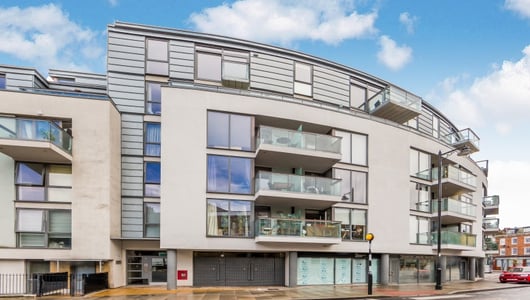
UK rental market Q4 2021
Rental growth was very high in 2021, as high as 10% at national level on Rightmove’s index. This is driven by demand continuing to outstrip supply across most regions, property types and price points.
UK sales market Q4 2021
Q4 was the first quarter for over a year with no stamp duty discount available, but the sales market maintained momentum and finished the year with double-digit price growth. Transactions have so far avoided the steep drop off expected in some quarters, despite shortages of stock for sale.
Connecting the UK
We partnered with YouGov to survey MPs and councillors about the Government’s gigabit rollout plans and the challenges involved in meeting the national targets. In addition, we surveyed businesses and consumers to gain insight into the level of understanding around gigabit capable technology and awareness of the benefits that gigabit connections can bring.
Wider South East Q3 2021
High levels of house price growth were seen in both the sales and rental markets of the wider South East in Q3, continuing the trend seen throughout 2021 so far.
UK economic outlook Q3 2021
There was a stop-start nature to the economic recovery in Q3, with shortages of labour and materials taking over from pandemic restrictions as the main drag on growth.
Forecasts & outlook Q3 2021
The economy is recovering ahead of the initially expected schedule and, while this should continue next year, there are risks that supply chain and labour issues could push inflation well above target.
UK development review Q3 2021
More of the same for the development statistics in Q3 as pre-pandemic levels of output continue both at national and London level.
UK rental review Q3 2021
The rental market recovery strengthened further in Q3, with high demand and low supply conditions continuing across the country.
UK sales review Q3 2021
The high demand and relatively low supply environment persisted in Q3, meaning more house price growth and continuing high levels of activity as buyers competed over available homes.
London sales & rental review Q3 2021
The London rental market was very strong in Q3, across both the prime and mainstream sectors, as demand increased significantly due to returning office workers and the usual seasonal boost from students and graduates.
Forecasts & outlook Q2 2021
UK house price growth is expected to continue, but at a slower pace after a very strong start to the year. The momentum built up is such that falls are not anticipated, even as Government employment support schemes are withdrawn.
Wider South East Q2 2021
The wider South East is seeing strong house price and rental growth in 2021, outperforming London but broadly in line with national trends.
London sales & rental review Q2 2021
The mainstream London sales market has held up well through the pandemic but is lagging the very strong growth seen in other regions. Its rental market is weaker but showing signs of recovery.
UK economic outlook Q2 2021
The recovery continues but the economy remains smaller than before the pandemic and a range of risks persist.
UK development review Q2 2021
Housebuilding in Q2 continued in line with pre-pandemic trends at national level. London saw stronger performance, boosted by the improving lettings market driving a recovery in activity in the Build to Rent sector.
UK rental review Q2 2021
Rents hit record highs again in Q2 at national level and, while the split between London and other regions continued, there were signs that demand in city centres is recovering.
UK sales review Q2 2021
At national level the sellers’ market continues, with high demand and relatively low supply pushing up prices and turnover. Most of the benefit of the stamp duty holiday has gone, but other factors such as higher levels of savings, low interest rates, and lifestyle re-evaluation continue to drive activity.
What is the future of Prime Central London?
Prime Central London has had to adapt and evolve to meet the changing needs of the rich and famous for hundreds of years. It now faces new challenges – not just thanks to Brexit and the immediate impacts of the global pandemic – but also longer-term issues like changing lifestyle preferences and climate change.
Prime Central London’s global demand & local markets
Prime Central London attracts people from across the world, with demand for homes reflecting global political and economic trends. But local factors are also important. Each sub-market of Prime Central London has its own appeal to different people.
What is Prime Central London?
There is no single definition of Prime Central London, and it continues to change and evolve depending on the demands and fashions of the time. Prime Central London has seen huge change since it emerged from the fields and marshes of the 18th century.
The evolution of Prime Central London report
The evolution of Prime Central London report is the first of Cluttons’ series of new research looking at the opportunities and challenges facing the UK’s housing market. We start our series by focusing on Prime Central London.
Forecasts & outlook Q1 2021
UK house price growth is likely to slow in the second half of the year as the Stamp Duty holiday reaches its end and government support schemes are withdrawn. Rents in Prime Central London are expected to bounce back slightly this year after a very poor 2020. Next year could see strong growth for both sales and rental values as the London economy, and its global connections, get back closer to normal.
Wider South East Q1 2021
The wider South East saw strong house price growth in Q1, and the average time taken to rent a property reached record lows. The pandemic may be impacting the locations people choose, perhaps leaving traditionally popular commuter towns overlooked.
Prime Central London Q1 2021
Prime Central London sales values continued to fall in Q1, but transaction numbers and stock levels were up on the same period last year which suggests increased confidence in the market. The rental market is still weak, but sentiment has improved relative to late last year.
Greater London sales & rental review Q1 2021
Annual house price growth is positive in Greater London, at above 4%. But transaction levels are below their long-run average and rental growth is negative. Leading indicators show the capital underperforming the rest of England on all three metrics.
Residential development Q1 2021
K residential development output appears to have fully recovered, albeit recent activity has not made up for the drop in supply in Q2 2020. New build sales and development activity in London remains slow, but agents and developers are positive about the longer-term outlook.
UK rental review Q1 2021
The UK lettings market started 2021 in robust fashion, with sentiment in Q1 pointing towards higher demand and price growth. There is, however, growing evidence of a potentially significant problem with arrears in the private rented sector.
UK sales review Q1 2021
A year on from the first lockdown and the UK housing market continues to defy the negative economic news, with values up again in Q1 and activity remaining strong. On an annual basis prices are up 5.7% according to the Nationwide index, and mortgage approvals in February were 20% higher than the same month a year ago.
UK economic outlook Q4 2020
The restrictions due to the second lockdown – the so-called ‘circuit-breaker’ – caused a further fall in GDP in November, 2.6% below the previous month. On an annual basis, output has fallen 8.9%, and is currently 8.5% below the pre-pandemic level (February 2020).
Forecasts & outlook Q4 2020
The table below shows Experian’s latest house price forecasts for Cluttons, all based on their latest central economic scenario of GDP returning to end-2019 levels in early 2023 – this is a slower recovery than expected last quarter.
Prime Central London Q4 2020
There were further decreases for sales values and rents in Q4, according to Cluttons Prime Central London Index, shown in Figure 1. Although the pace of quarter-on-quarter decreases slowed, the annual falls reached 13.2% for sales and 17.8% for rents.
Wider South East Q4 2020
The wider South East saw strong price growth in Q4, in line with the performance of the UK market, according to the Nationwide indices.
London development Q4 2020
Q4 was a slower one for new build sales and development activity in London, with all three main metrics lower than Q4 2019, according to the latest data from Molior, shown in Table 1. Molior’s January report noted distinct patterns of behaviour across 2020’s four quarters, not all driven by the pandemic.
Greater London sales & rental review Q4 2020
In terms of sentiment 2020 was a case of London vs. the rest, with stories of buyers keen to move to larger homes in the country now they can, or must, work from home and avoid the commute.
England residential development Q4 2020
Q4 saw the residential development sector try to make up lost ground from the first lockdown, partially succeeding.
UK rental review Q4 2020
After much volatility in Q2 and 3, sentiment in the national lettings market (outside London) settled back towards pre-pandemic trends in Q4, despite continuing lockdown restrictions.
UK sales review Q4 2020
UK house prices finished a volatile year over 5% up on where they started, according to the main indices (+7.3% Nationwide, +6.0% Halifax).
UK residential sales review Q3 2020
strong summer, defying the economic weakness caused by the COVID-19 lockdown and continuing restrictions. The third quarter of 2020 saw recovering activity levels and price increases, according to the main indicators.
London development Q3 2020
Activity levels in the London development market bounced back strongly in Q3 across all three main metrics (starts, completions and sales), according to Molior data as shown in Table 1. This suggests the impact of lockdown was short-lived and contained to the previous quarter.
Greater London sales & rental review Q3 2020
Much of the commentary around London property in the pandemic has suggested that increased working from home and a desire for more space – particularly gardens – could really reshape the market as people and businesses abandon the city.
UK development overview Q3 2020
We saw last quarter that residential development activity quickly recovered to pre-pandemic levels once sites were able to open up again.
Forecasts & outlook Q3 2020
Experian’s latest house price forecasts for Cluttons are shown in the table below, based on their central economic scenario of a ‘delayed V-shape’, which sees UK GDP recover to pre-pandemic levels at the start of 2022.
Prime Central London Q3 2020
The Cluttons Prime Central London Index, shown in Figure 1, reported that sales values in PCL were 8.4% lower in Q3 2020 than a year earlier, the seventeenth consecutive quarter of annual price falls.
UK economic outlook Q3 2020
The economic data reported since our last update appears to have finished off any hopes of a ‘V-shaped’ recovery.
UK rental review Q3 2020
The national lettings market continued its post-pandemic recovery in Q3, apart from in London where high supply and low demand continued to put downward pressure on rents.
Wider South East Q3 2020
tracking the national average for several years, whereas London has seen more volatility, according to the Nationwide indices.
Forecasts & outlook Q2 2020
PCL values set to bounce back next year but UK recovery delayed until 2022. Will Brexit and potential tax reform throw things off course?
Wider South East Q2 2020
Stamp Duty holiday and desire for space see interest rise across wider South East.
UK rental review Q2 2020
Rental market bounces back but outlook is mixed as increases in remote working and studying could limit demand in some sectors.
Greater London sales & rental review Q2 2020
London’s rental market set to struggle while buyer demand remains robust despite stretched affordability – and is given further boost by Stamp Duty holiday.
Prime Central London Q2 2020
Rental and sales values dip across all Prime Central London areas but activity continues where buyer and seller expectations are aligned.
London development Q2 2020
Sales and construction hit by pandemic in Q2 but latest completions data is more positive.
UK economic outlook Q2 2020
Slow initial recovery and scale of government support suggest difficult time ahead for economy.
UK development overview Q2 2020
Housebuilding sites reopen and developers get boost from increased planning flexibility.
UK sales review Q2 2020
Early indicators suggest post-lockdown surge for sales market, but how long can it be sustained?
London residential development Q1 2020
The pandemic introduces additional risks to the Central London new build market, on top of its general impact.
Residential London review Q1 2020
As COVID-19 stalls sustained price growth in Greater London, we review recent data indicating already decelerating growth in high-value locations.
Prime Central London review Q1 2020
Initial research suggests activity in Prime Central London (PCL) will be particularly affected by COVID-19, but discretionary buyers and sellers may help the market recover quicker than other parts of the UK.
UK residential forecast Q1 2020
The extent and duration of the health and economic crises caused by COVID-19 are still unknown, casting a shadow over the economy.
UK Home Counties review Q1 2020
Sales market sees values across all counties close to flat over the past year, with activity slightly down overall.
UK residential development review Q1 2020
As many sites’ shutdown at the start of lockdown, new build development is subject to the twin effects of an uncertain economy and the physical disruption.
UK rental review Q1 2020
As new landlord instructions and rent expectation figures drop to their lowest ever levels, how will rents be impacted later in the year?
UK economic outlook Q1 2020
Initial data measuring the economy post-shutdown suggested a large impact. But as the Coronavirus pandemic continues, the Government’s unprecedented response gives hope that that the outcome will be better than initially expected.
UK residential sales review Q1 2020
At the end of 2019, the UK’s housing markets were starting to emerge from a long period of ‘wait and see’. By January, UK sales expectations were the highest they’d been since the end of 2015. But before the quarter ended, COVID-19 brought transactions levels to an immediate halt. Here, we assess the potential impact on housing throughout the rest of the year.
Residential market outlook, September 2019
Price corrections leading to an increase in buyer enquiries.
Residential market outlook June 2019
Brexit continues to dominate the headlines. Resilient buyers sought to close deals across the capital before the 29 March deadline, others are watching and waiting for a clarity and certainty that, despite the extension, remains elusive.
London residential market outlook winter 2018/19
Cluttons has released its Winter 2018/19 Residential Market Outlook report.
Autumn budget 2018
The Chancellor unveiled the 2018 Autumn Budget on 29 October, the last before Britain officially leaves the EU in March next year. In our response document, we present our view on some of the key announcements.
London residential market bulletin summer 2018





